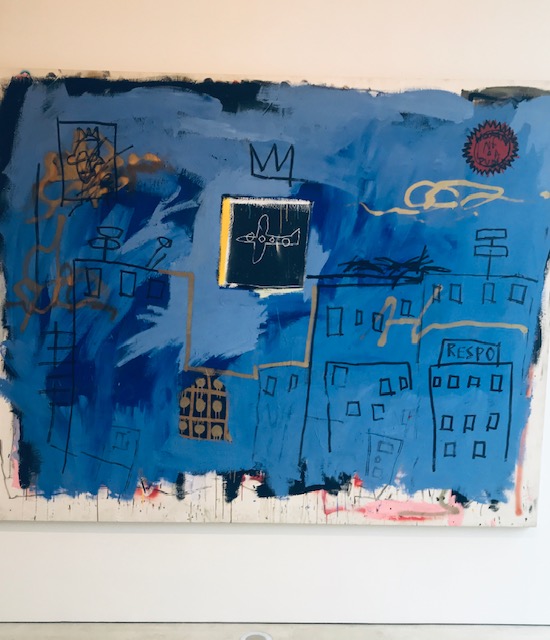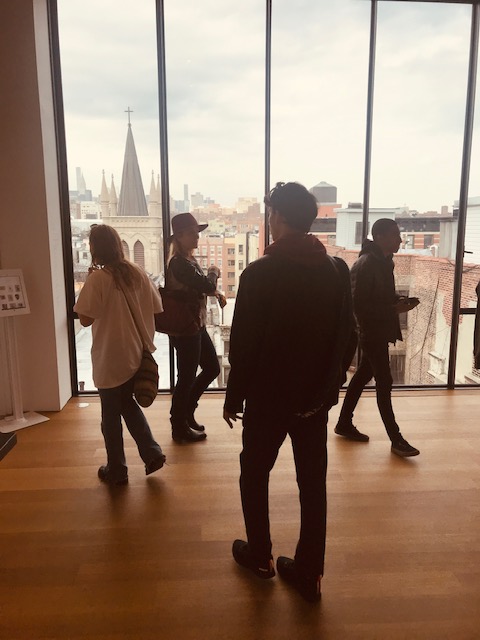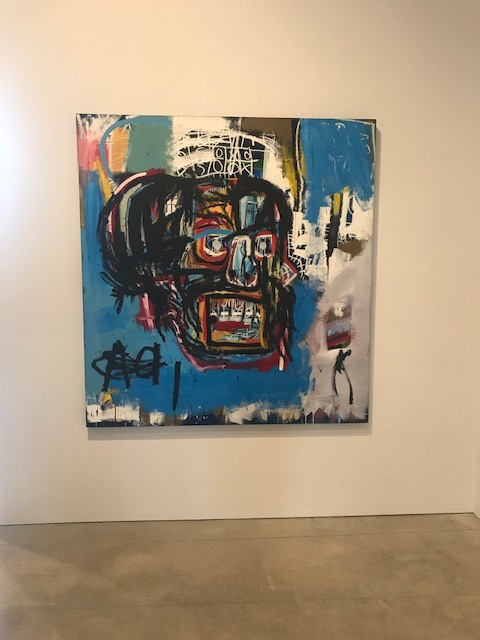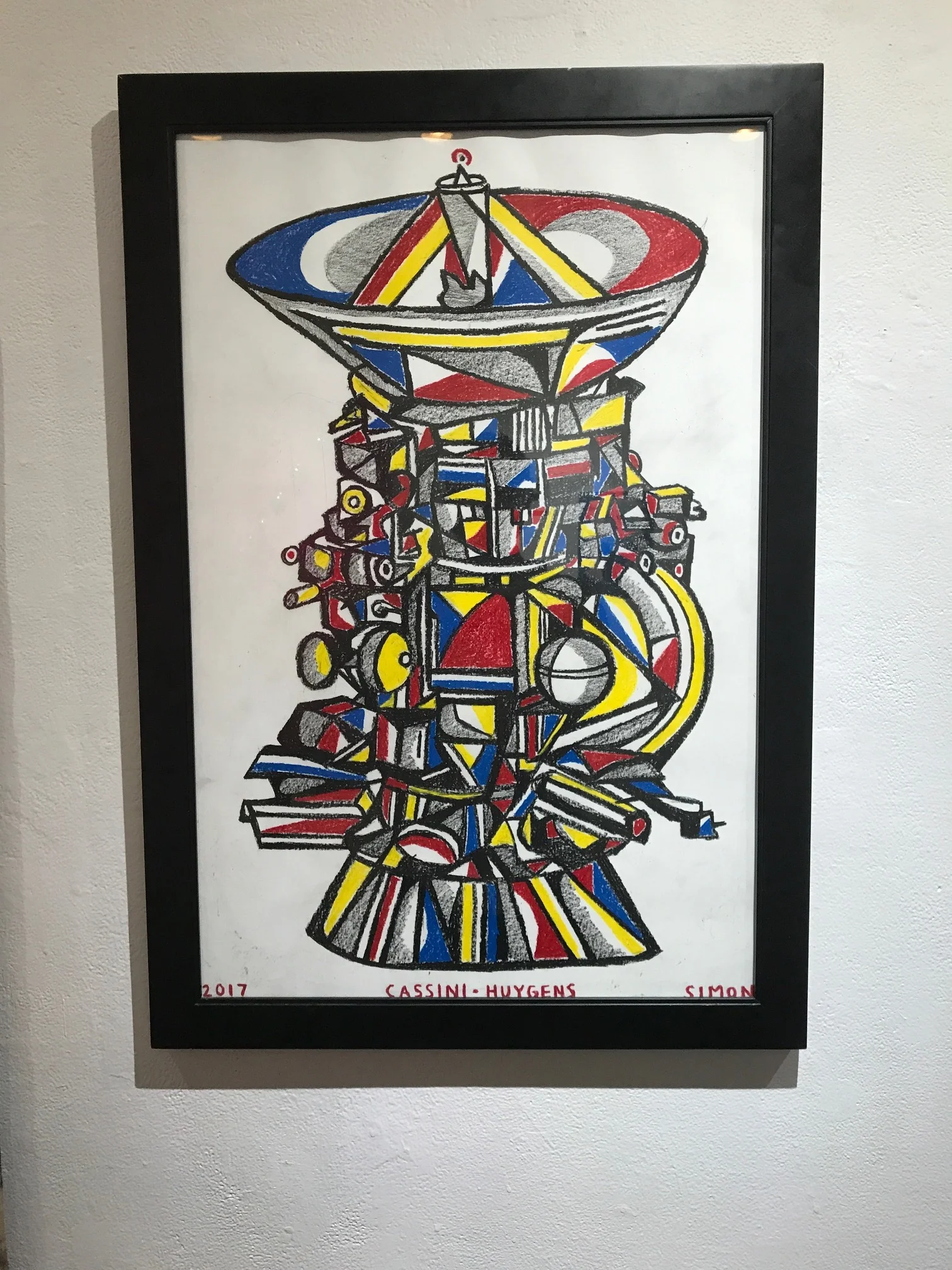Might Jean-Michel Basquiat have unwittingly foretold 9/11 when he painted an untitled painting in 1981? This month, The Brant Foundation brought an important solo exhibition of the works Jean-Michel Basquiat to the East Village of New York City, on the very streets the artist might have slept a night or two with other homeless people—before the gentrification of the hood. This exhibit is exciting because a native son had come home!
The Brand Foundation renovated every inch of the building which formally housed the studio and home of artist Walter De Maria, an installation artist and sculptor, into an incredible space for art. Once you enter the fortress-like black entrance doors of the otherwise nondescript building, you are searched by security and then invited to enter a dimly lit, rather large elevator and lifted to the third floor where the exhibition begins. Once the elevators doors slide open, you are immediately taken into the art world’s Willy Wonka’s Chocolate Factory. A water skylight window filters moving natural light into the room and your senses are immediately nourished with colors and the urban radicalness the artist is most associated with. The most common and first reaction of many of the visitors getting off the elevator—seasoned, hard-nosed New Yorkers mind you—is “WOW.”
Among the many paintings showcased throughout the building, some well-known to the public—like the skull head painting on a blue background purchased by Yusaku Maezawa at Sotheby’s two years ago for a mind-blowing $110.5—there are some lesser known pieces like the Untitled (Blue Airplane). The painting is stretched on an 86 × 104-inch canvas depicting a urban landscape of building with an airplane flying in the middle of the painting in a black box. Having experienced 9/11 in this city, this was the first thought that came to mind on viewing this piece. Why is the plane boxed into a black box space? Might the greatest attack to ever take place on American soil also have been in Basquiat’s subconscious while he painted the urban scape 20 years before it happened? As a citizen of his time and space, he was documenting his surroundings. There’s a waiting list to receive free ticket admission into the show.
The Brandt Foundation seems to be sold out until the last day of the show on May 12, 2019; however, you can add our name to a waitlist. http://brandtfoundation.org
And don’t miss the show at the Nadmad Contemporary entitled “Jean Michel Basquiat—Xerox”
http://www.nahmadcontemporary.com/exhibitions/jean-michel-basquiat-xerox
Also, the last days of the gigantic Andy Warhol show is ending at the end of March at the Whitney Museum. https://whitney.org.











































